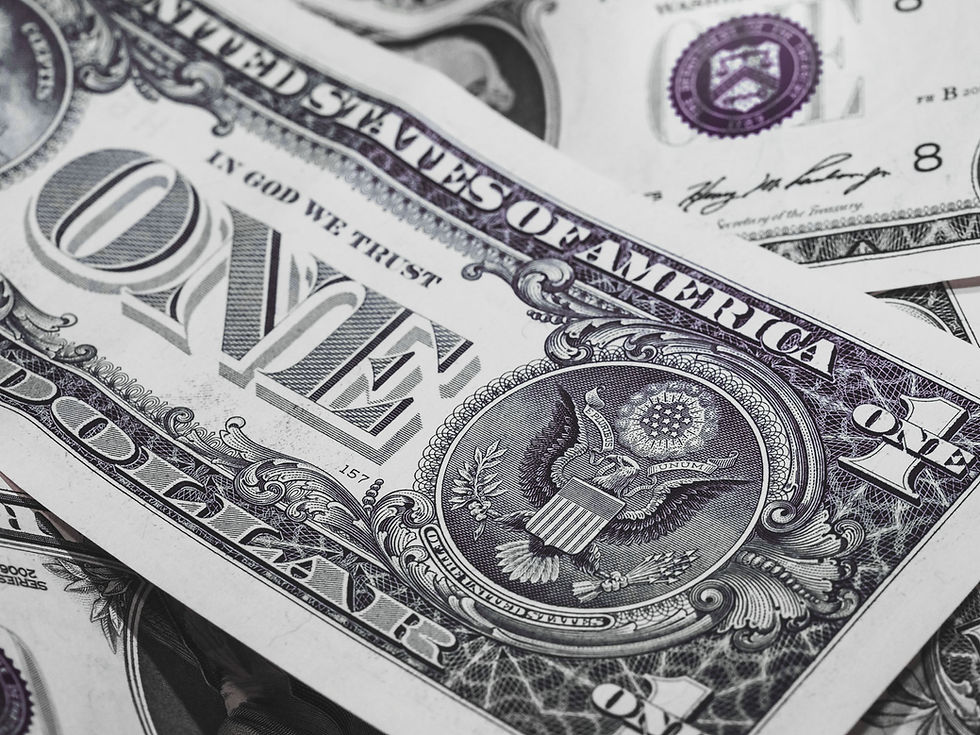The Dollar's Reign
- gsplans staff writers
- Jul 8, 2024
- 4 min read
A Historical Perspective on Why It Continues to be the Global Currency of Choice
As a global citizen, it is impossible to ignore the dominance of the US dollar in the international financial system. From international trade to foreign exchange reserves, the dollar reigns supreme. But what makes the dollar such a powerful currency?
In this article, I will explore the historical perspective of the dollar's reign and why it remains the global currency of choice.
The importance of the dollar as the global currency
The US dollar has been the global currency of choice for decades, and its importance cannot be understated. It is the most widely used currency in international transactions and accounts for over 60% of all foreign exchange reserves.
The dollar is also the currency in which most international trade is conducted, with countries using it as a medium of exchange for their exports and imports. This dominance has given the US a tremendous economic advantage, allowing it to finance its debt and maintain its global influence.

The Dollar's Reign
What is a reserve currency?
A reserve currency is a currency that is held in significant quantities by governments and institutions as part of their foreign exchange reserves. It is used as a store of value and a means of international payment. The status of a currency as a reserve currency is determined by its stability, liquidity, and the size of its economy. The more stable and liquid a currency is, the more likely it is to be used as a reserve currency.
The history of reserve currencies
Throughout history, there have been several reserve currencies. The first was the Portuguese real, which was used in the 15th and 16th centuries during the Age of Discovery. The Spanish silver dollar became the dominant reserve currency in the 17th and 18th centuries, followed by the British pound in the 19th and early 20th centuries. The pound was eventually replaced by the US dollar after World War II.
The rise of the dollar as a reserve currency
The US dollar became the dominant reserve currency after World War II, thanks in part to the strength of the US economy and the stability of its political system. The Bretton Woods Agreement of 1944, which established a fixed exchange rate system, also played a significant role in the dollar's rise. Under the agreement, other countries pegged their currencies to the dollar, which was in turn pegged to gold. This gave the dollar a fixed value and made it the most stable currency in the world.
The Bretton Woods system and its impact on the dollar's dominance
The Bretton Woods system lasted until 1971, when the US ended the convertibility of dollars into gold. This move caused the value of the dollar to plummet and led to a period of inflation and economic uncertainty. However, the dollar remained the dominant reserve currency, as other countries continued to hold large amounts of dollars in their foreign exchange reserves.
The challenges to the dollar's dominance
In recent years, there have been challenges to the dollar's dominance as a reserve currency. The global financial crisis of 2008 and the subsequent economic turmoil led to a loss of confidence in the dollar. The rise of China as a global economic power has also led to calls for the yuan to become a reserve currency. However, the Chinese government's tight control over the yuan's value and its lack of openness have prevented it from becoming a viable alternative to the dollar.
The future of the dollar as a reserve currency
Despite the challenges to its dominance, the dollar is likely to remain the global currency of choice for the foreseeable future. The US economy is still the largest in the world, and the dollar is still the most stable and liquid currency. The US government's willingness to use the dollar as a tool of foreign policy also gives it an advantage over other currencies.
Other potential reserve currencies
There have been several currencies that have been touted as potential reserve currencies, including the euro, the yen, and the yuan. However, each of these currencies has its own challenges. The euro has been plagued by the debt crisis in Europe, while the yen has been weakened by Japan's aging population and deflation. The yuan, as mentioned earlier, is still subject to government control and lacks the openness needed to become a true reserve currency.

The Dollar's Reign
Why the dollar continues to reign as the global currency of choice
In conclusion, the US dollar's dominance as a reserve currency is based on its stability, liquidity, and the size of the US economy. Despite the challenges to its dominance, the dollar is likely to remain the global currency of choice for the foreseeable future. Other currencies may rise in prominence, but none are likely to replace the dollar as the primary reserve currency.
As a global citizen, it is essential to understand the role of the dollar in the international financial system and the impact it has on the global economy.
As the global financial system continues to evolve, it is important to stay informed about the role of reserve currencies like the US dollar.
Komentáře